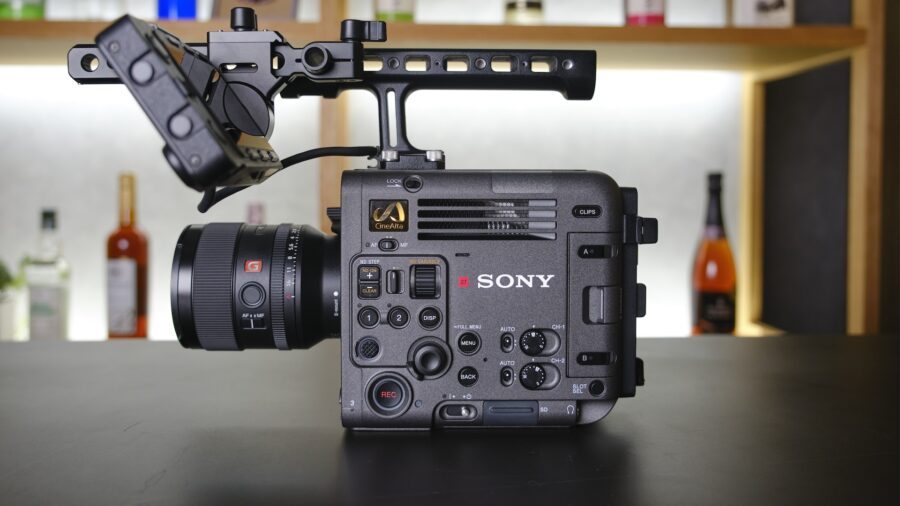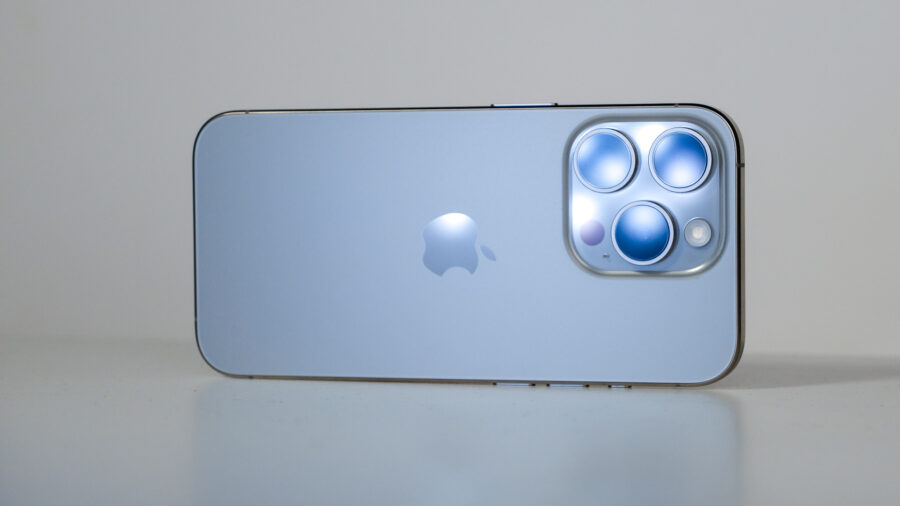
I can’t believe another year is about to end, and what a year it was! Manufacturers certainly did not stand still (some more than others), but the message is clear: You don’t have much of an excuse not to go out and shoot your next blockbuster, regardless of your budget. (See the excellent article my colleague Omri wrote about “Democratization in the Filmmaking Industry“). In fact, modern filmmaking tools are simply great at bringing to the table a quality of recording that we could only dream about in the past (not so long ago actually). On second thought, since the equipment is so damn good already, at times it feels as if the “art of storytelling” is lagging a bit behind. Maybe we should declare 2024 as the year of “how to tell a story” rather than “what to film with”… Anyway, dreams aside, let’s dive into the reasons for awarding the iPhone 15 Pro/Max and FUJIFILM GFX100 II as our Cameras of the Year 2023.
In 2023, manufacturers offered new products, be it a phone, mirrorless, or cinema cameras. We were also very interested to hear the community’s opinion before publishing our verdict, so we ran this poll. (A big thank you to those who took the time to participate). As you can see from the poll, two cameras scored highly, the unique Sony Burano (Under “Video specific camera of the year”) and the very interesting rolling shutter-free Sony a9 III (Under “mirrorless camera of the year”).

Both the Sony Burano with its built-in ND filter and IBIS (first in a cinema camera), and the Sony a9 III with its global shutter sensor might represent a path for many future mirrorless cameras. The thing is, for both cameras, their firmware is not finalized, so testing them inside out is currently not an option. Add to this the fact that the Sony Burano and a9 III are not available for purchase, and you have cameras that we couldn’t really consider as winners. Long story short, we will take a very close look at both of these cameras at the beginning of 2024, so don’t be surprised to meet these two again in a “Camera of the Year 2024” article.

So, we are still left with plenty of other candidates. Some are better than others, but all in all, it constitutes a respected list! Each one of the manufacturers mentioned here tried their best to capture our hearts with a tool that they carefully crafted to meet our ever-growing demands. From this list, we picked up the two cameras that, in our opinion, stood above the others.

Apple iPhone 15 Pro/Max
In the action/Pocket/Smartphone category, we had quite some competition (the DJI Osmo Pocket 3 surely captured our attention) but in the end, the choice was made, and the new iPhone 15 Pro/Max is our absolute winner. In the past, like many of us, I would say: “The best camera is the one you have with you.” This usually referred to the fact that “O.K., we have a phone with us, and we can use it if needed.” Now, after spending a significant number of hours filming with the new iPhone 15 Pro, I can see that I tend to treat this tool as a valid candidate for some of the things I (we) do. As noted before, internal or external ProRes recording in LOG/HDR/SDR is now possible next to full manual setting control, thanks to the Blackmagic Camera app. (By the way, don’t let anyone know that I use the phone camera in simple Apple camera mode when I don’t have accessories like ND filters with me).
For higher video quality use the 24mm lens, but as the filming situation dictates, there is nothing wrong in filming with the other two lenses as well.
Currently, I find the iPhone to be a perfect B camera when I’m filming documentaries. It is so (so) easy to follow the subject you’re filming while using it. Lately, when conducting a video interview, I made a last-minute decision to film from an additional angle, and I wasn’t afraid to use the iPhone for that. There are many good usage examples of the new iPhone out there already, but the one I would like to highlight is Tilta’s latest production for their new upcoming Khronos iPhone accessories. I’ll set aside any potential debate on whether a fully accessorized phone truly defines its “mobile purpose” and instead focus on the ultimate image quality, recognizing that this production was likely approached in a “mini Hollywood style”. We will produce and share modest content taken with the iPhone 15 Pro during 2024, but for now, I would recommend that you watch our iPhone 15 Pro discussion and lab test results and read our article, “Is Another Camera Segment in Danger?“.

FUJIFILM GFX100 II
FUJIFILM is one of those companies that during the last two years raised their game when it comes to their mirrorless camera’s video capabilities. Last year, our attention was captured by the X-H2S (Review here), and Our Camera of the Year 2022, the X-H2 (Review here). This year, the X-S20, next to the features-rich GFX100 II, became a reality.
The FUJIFILM GFX100 II, 102MP large sensor mirrorless camera sits on a higher pricing scale when compared to other cameras ($7,499), so for sure some careful thought is required before making a purchase, yet for this price one gets a very flexible working tool. (Review here, sample footage here). Let me note some of the unique features that make this a “Swiss army knife” camera: The new sensor next to X-Processor 5 allows up to 8K/30p, 4:2:2, 10-bit, ProRes HQ internal recording including non-cropped 4K/60. A selection of different image circle coverage and recording codecs/resolutions is possible; external ProRes HQ recording to an SSD via USB-C, and 12-bit RAW output via HDMI. For the first time, an anamorphic 2X de-squeeze recording is enabled (8K cropped). Different de-squeezed monitoring options are available. Improved stabilized sensor (not so easy to achieve when talking about such a large sensor). Improved autofocus with “subject tracking” (great for following objects). I would also like to mention the excellent EVF, the built-in transmitter for Camera-to-Cloud recording (Frame.io compatible), Timecode sync (with Atomos ULTRASYNC Blue), REALA ACE film simulation (my personal favorite, next to F-log2), and the possibility of adding an external cooling fan to reduce possible overheating.
And, of course, it is an excellent photo camera. One thing that I was a bit concerned about was the selection of lenses for this camera, but I see more third-party lens manufacturers who are producing Full-Frame lenses with greater image circles which in many cases can fit this camera with minimal vignetting.
Other prime candidates
There are three other cameras that I would like to mention in this article as they do an excellent job of supporting our work as filmmakers.
Panasonic LUMIX S5 IIX
Hot on the heels of the LUMIX S5 II (Review above), the LUMIX S5 IIX represents the best value-for-money Full-Frame camera (on sale until year-end for $1,997.99 at B&H). For me, this “no bullshit” workhorse stands high above other cameras in its category. Panasonic did a great job of identifying what filmmakers really need, (Good Phase Detection autofocus anybody?), packaging it in an attractive body, and equipping it with one of the best (If not the best) available “In Body Image Stabilization” (IBIS) systems. Top this with up to 6K internal video recording (ProRes/All-I), USB-SSD recording, Dual Native ISO, plus more, and you have a winner!
FUJIFILM X-S20
Personally, this is the camera that I used most this year. Having such a compact device that can shoot up to 6K resolution in an open gate mode for $1,299 is worth the extra attention. (Full review here). By now, I have countless hours of filming with the X-S20 and I can’t stop praising the joy of filming with it. Hopefully, some enhancements like REALA ACE film simulation next to external USB-C recording (or even anamorphic monitoring options) can follow with a firmware update that will make this camera even more attractive.

Nikon Z 8
The Nikon Z 8 captured our attention as the little sibling of our Camera of the Year 2021, the Nikon Z 9. Having the ability to record 8K internal RAW, 4K 120fps, internal ProRes, and much more, just like the Z 9, makes this camera a great filming tool to consider. The camera tends to overheat faster than the Z 9 and, of course, relies on smaller batteries, but the gain here is greater portability. (More on the Nikon Z 8 can be found in our Databases here).
Camera of the year 2023 is a big topic and we are sure that you have an opinion! Please share with us your thoughts in the comment section below!































